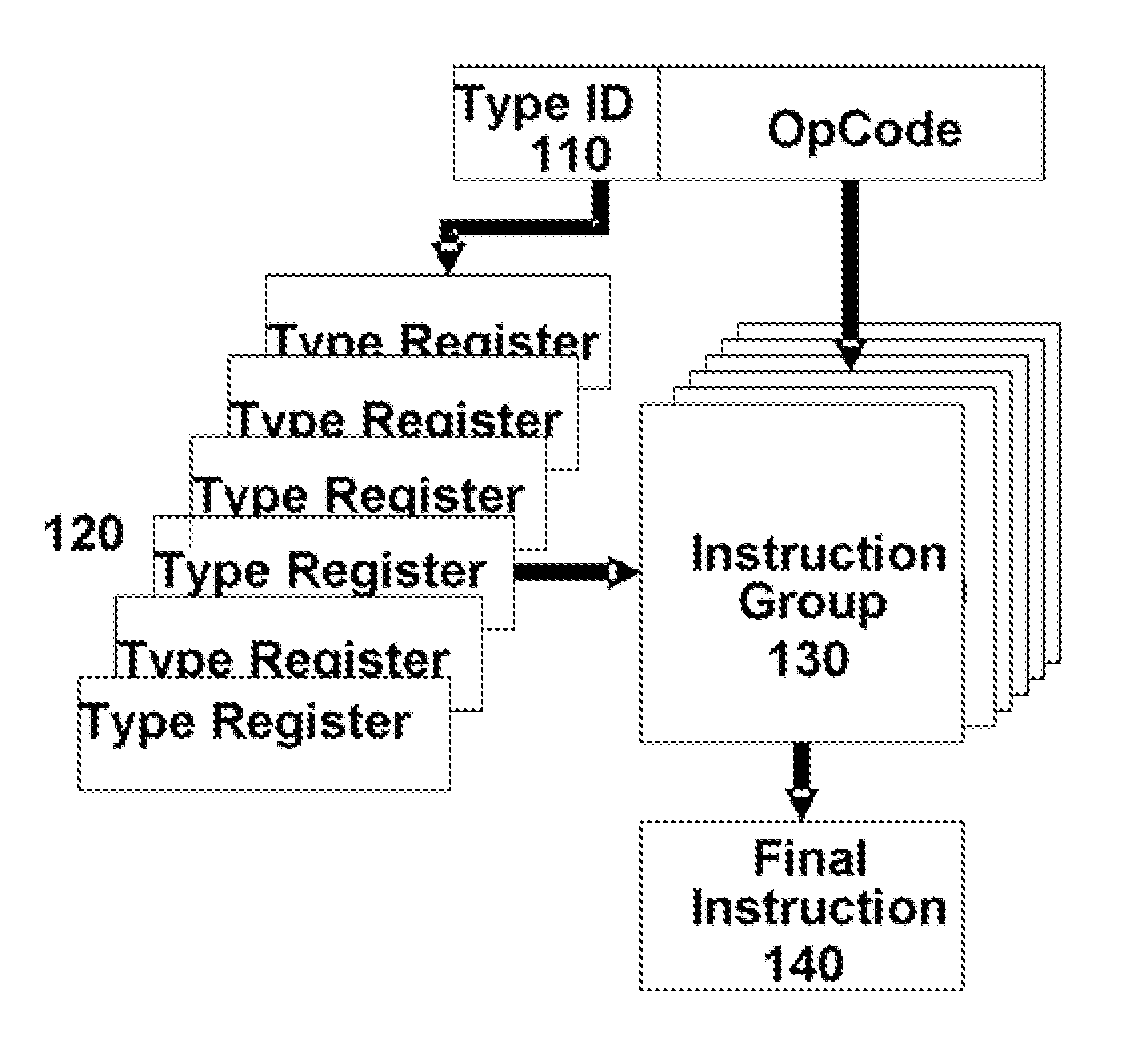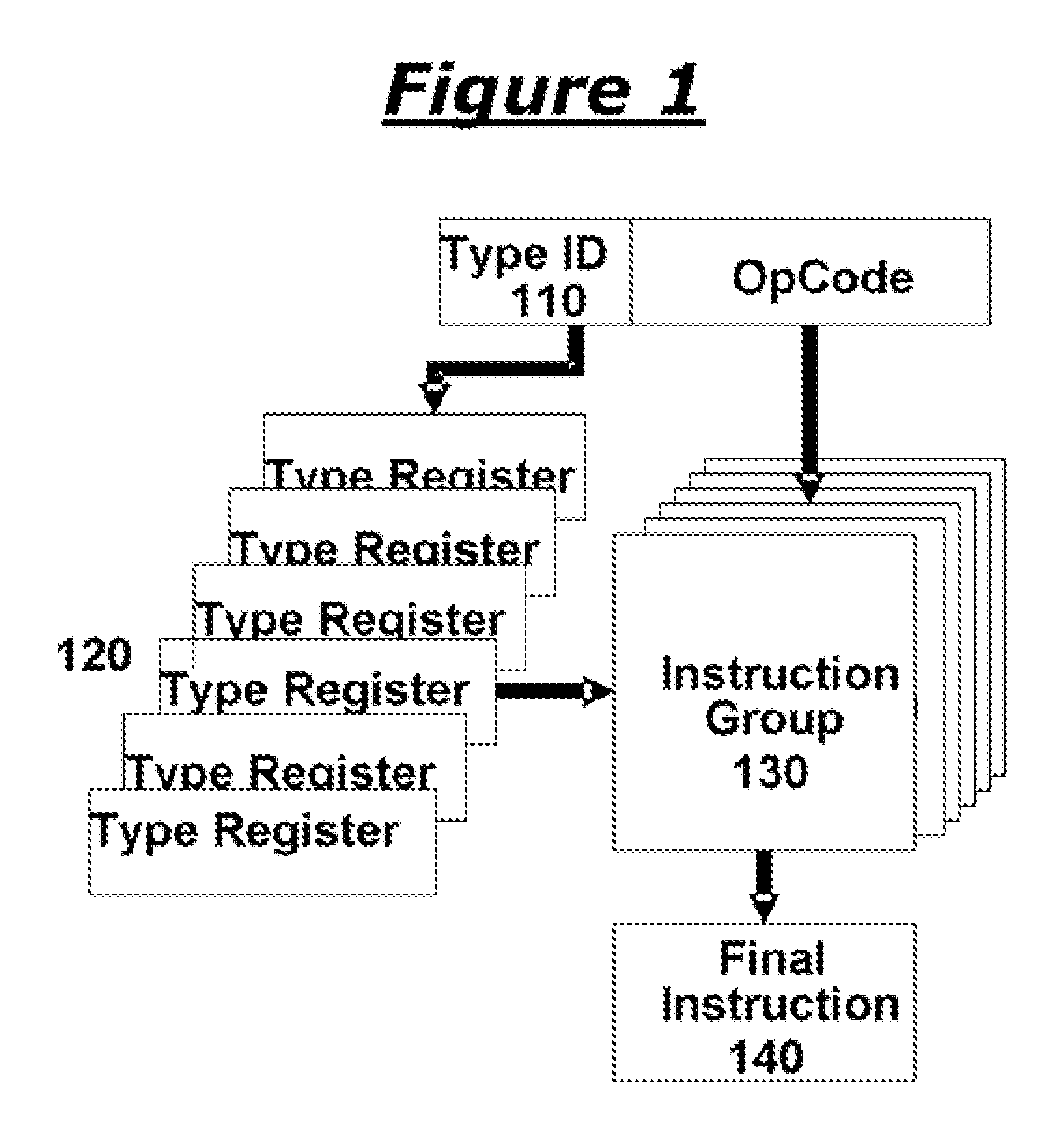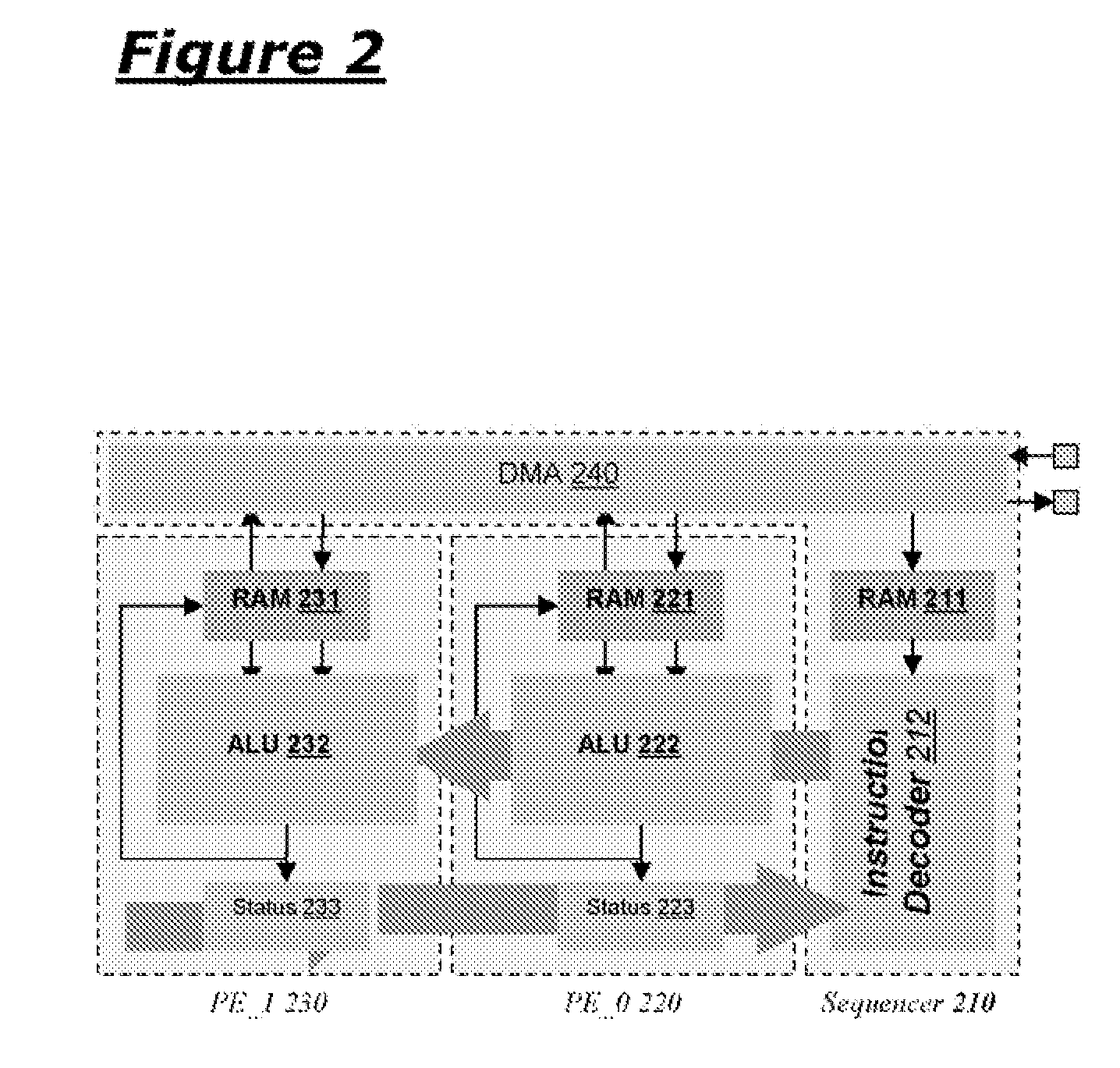Processing Architectures with Typed Instruction Sets
a typed instruction and instruction set technology, applied in the field of instruction processing in microprocessor architectures, can solve the problems of reducing the memory space needed for lookup, reducing the bulk of instructions, and reducing so as to reduce the bulk of microcoded programs, reduce the bulk of microcode, and reduce storage requirements
- Summary
- Abstract
- Description
- Claims
- Application Information
AI Technical Summary
Benefits of technology
Problems solved by technology
Method used
Image
Examples
Embodiment Construction
[0015]The numerous innovative teachings of the present application will be described with particular reference to the presently preferred embodiment (by way of example, and not of limitation).
[0016]The typed instruction set is a novel instruction format and decoding scheme that overcomes many of the disadvantages of traditional Very Long Instruction word (VLIW) architectures and has at least the following benefits:[0017]The instruction set can be expanded while maintaining backward compatibility with existing programs;[0018]Program code density is much higher than with traditional VLIW instruction sets; and[0019]Algorithms can be coded independently of the type of data to be processed.
[0020]FIG. 1 schematically shows how an instruction is decoded using on-the-fly selection of the appropriate interpretation register (Type Register in this example) to get the appropriate Instruction Group. With reference to FIG. 1, each instruction includes a Type ID field (110) that is used to select...
PUM
 Login to View More
Login to View More Abstract
Description
Claims
Application Information
 Login to View More
Login to View More - R&D
- Intellectual Property
- Life Sciences
- Materials
- Tech Scout
- Unparalleled Data Quality
- Higher Quality Content
- 60% Fewer Hallucinations
Browse by: Latest US Patents, China's latest patents, Technical Efficacy Thesaurus, Application Domain, Technology Topic, Popular Technical Reports.
© 2025 PatSnap. All rights reserved.Legal|Privacy policy|Modern Slavery Act Transparency Statement|Sitemap|About US| Contact US: help@patsnap.com



